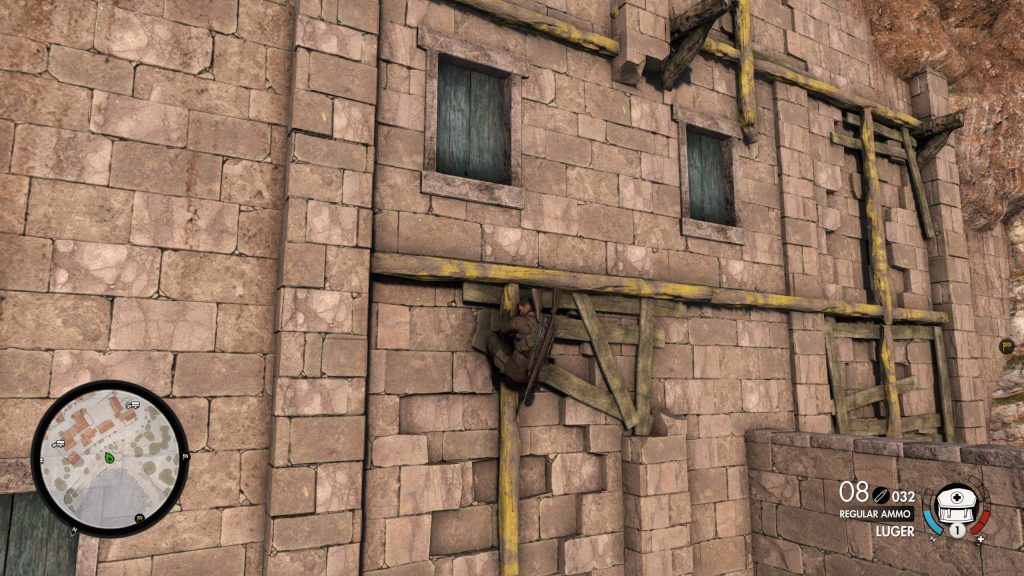Make Interactive Objects in the Game World Easy to Identify
On this page
Interaction is a fundamental component for ensuring players enjoy your game. If players are to interact effectively with characters and objects within the game world, they must be able to easily recognize which objects and characters are interactive.
Add Static Object Features
These features are permanently attached to objects and characters within the game world to indicate their interactivity.
Examples of such features include:
Animations.
Visual Effects.
Outlines or glow effects.
Color changes.
In Sniper Elite 4, a white overlay on weapons dropped by enemies indicates that those weapons are available for use by the player.
Credit: Rebellion Developments. Footage captured by the author.
In Sniper Elite 4, players can also easily recognize climbable objects, such as wooden logs, due to their visual design.
Credit: Rebellion Developments. Screenshot captured by the author.
Sound Effects.
These object features can also function as accessibility options, allowing players to enable or disable them via the accessibility settings menu.
Example:
Players can toggle outlines on objects or characters that are interactive.
Add Dynamic Object Features
These features are triggered dynamically and change when the HUD cursor hovers over a specific object.
Examples of such features include:
Animations.
Visual Effects.
Outlines or glow effects.
Color changes.
In Gone Home, interactive objects change color when players hover their cursor over them. This functionality requires players to be in close proximity to the object.
Credit: The Fullbright Company. Footage captured by the author.
- Sound effects.
Make the HUD Cursor React
The HUD cursor itself can change its appearance when hovering over interactive elements.
In Tacoma, the HUD cursor changes from a dot to a circle with a dot in the center whenever players can interact with an object. Additionally, a brief hint is displayed, informing the player of the action that will be performed upon interaction.
Credit: The Fullbright Company. Footage captured by the author.
In Evil Genius 2: World Domination, the mouse cursor changes from a standard arrow to a hand icon when hovering over a structure or minion.
Credit: Rebellion Developments. Footage captured by the author.
Make the Player Character React
Examples of character-driven interaction feedback include:
The player character extending their hand toward an interactive object when the HUD cursor hovers over it for the first time.
The player character verbally acknowledging an object’s utility with a line such as, “I could use that,” when the cursor hovers over an interactive item.
Make the Player’s Gear or Tools React
Examples of gear-based feedback mechanisms include:
In Half-Life 2, the player’s gravity gun emits a reaction when the HUD cursor hovers over an interactive object.
A detector carried by the player may display movement on its needle indicator when the HUD cursor hovers over an interactive object.

